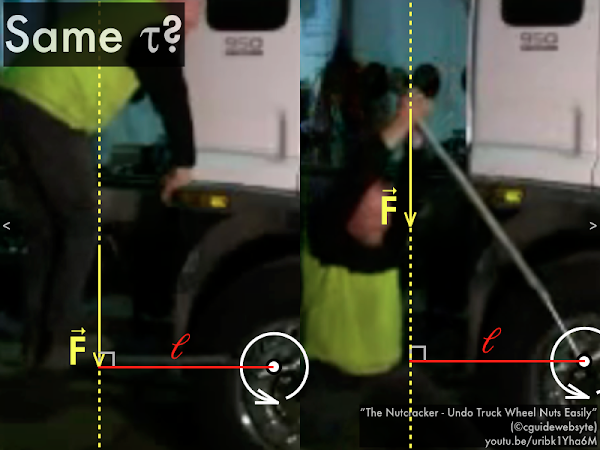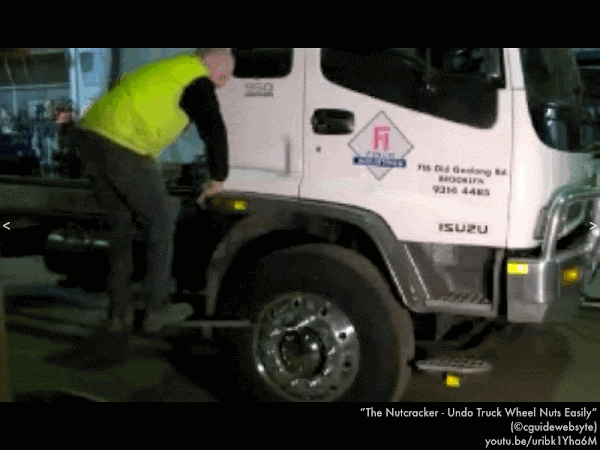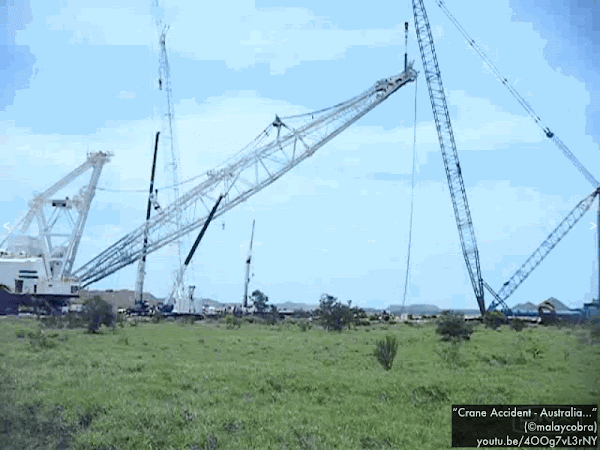Cuesta College, San Luis Obispo, CA
Students have a bi-weekly online reading assignment (hosted by SurveyMonkey.com), where they answer questions based on reading their textbook, material covered in previous lectures, opinion questions, and/or asking (anonymous) questions or making (anonymous) comments. Full credit is given for completing the online reading assignment before next week's lecture, regardless if whether their answers are correct/incorrect. Selected results/questions/comments are addressed by the instructor at the start of the following lecture.
The following questions were asked on reading textbook chapters and previewing a presentation on torque and rotations.

Selected/edited responses are given below.
Describe what you understand from the assigned textbook reading or presentation preview. Your description (2-3 sentences) should specifically demonstrate your level of understanding.
"Torque is related to the twisting of an object. It is the product of the length of the perpendicular lever arm and the force applied. The perpendicular lever arm is attached to the pivot point and intersects the line of action at a perpendicular angle. Newton's first and second laws hold true for torque. If the sum of the torques (counterclockwise and clockwise) is zero, the object remains stationary or in constant rotational motion (N1). If the sum of the torques is not zero, than the torques don't balance out and the object twists in the direction of the net torque."
"How torque and rotation are not the same thing. And that Newton's laws still apply for rotations."
"I understand torque especially since I'm a wrestler, which is all about torque--force times lever arm for life!"
"Lines of action and lever arms need to be identified, and then cw or ccw directions of torque. Torque equals magnitude of the force times the lever arm. Also take into account torques created by the weight force."
"I have not done any reading yet. So I can't effectively answer this question yet."
Describe what you found confusing from the assigned textbook reading or presentation preview. Your description (2-3 sentences) should specifically identify the concept(s) that you do not understand.
"I understood the presentation fairly well, but found both sections of the text book readings to be very difficult to follow."
"I was unable to finish the assigned reading, so some of the stuff about rigid objects in equilibrium might be confusing."
"I am a little fuzzy on how to apply the concepts of torque to rigid bodies. What does the 'lever arm' refer to and how can we use this in a calculation?"
"How to draw the line of action and perpendicular lever arm."
"Still not sure what a rigid body exactly is. Can you explain that?"
"What I found a bit challenging is the way we are to know if a torque is clockwise or counterclockwise. It still doesn't make complete sense."
"Rotational equilibrium confuses me a lot."
"I think I might understand this."
What is the SI (Système International) unit for torque?
"N·m"
"The SI units of torque is a Newton-metre, which is also a way of expressing a Joule (the unit for energy). However, torque is not energy."
"The joule."
"I don't know."
"J/mol·K."
Briefly describe how the line of action should be drawn for a given force.
"It should be drawn perpendicular to the lever arm."
"It should extend from along the force direction."
"A line of action should be drawn so that it extends the direction of a force and is positioned so that it passes through its point of application."
"In the right direction."
"I'm not sure."
"I don't know."
When a lever arm (or moment arm) is drawn, briefly explain where it starts, and how it should intersect the line of action for a force.
It starts at the pivot point and it intersect the line of action force at 90°."
"It begins at the axis and is perpendicular to the force's line of action."
"The lever arm is perpendicular to the line of action?

first; balanced. ************************************************ [48] second; unbalanced. *** [3] (Unsure/lost/guessing/help!) ****** [6]

first; balanced. [0] second; unbalanced. *************************************************** [51] (Unsure/lost/guessing/help!) ****** [6]
Ask the instructor an anonymous question, or make a comment. Selected questions/comments may be discussed in class.
"Is there any chance that you are going to change it so that these assignments are due right before class?" (No, because I need time to read all your comments and post it to this blog, and then decide what to cover in class the next day to best address everyone's needs. And then get some sleep.)
"I think the guy trying to remove the lug nut either needed some WD-40 or a pneumatic ratchet." (A Nutcracker®. Seriously. That's what he needs to crack that stuck nut.)
"I think I get this one."
"This chapter was really confusing, it would help a lot if more of the terminology was expanded or better explained."
"This questions and comments box is an amazing idea. It's refreshing to have an instructor genuinely interested in my feedback. 'What did one quantum physicist say when he wanted to fight another quantum physicist? Let me atom!'"
No comments:
Post a Comment